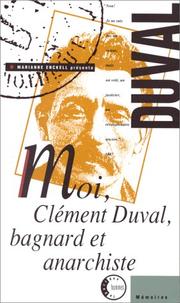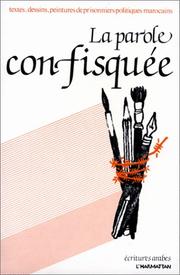| Listing 1 - 10 of 790 | << page >> |
Sort by
|
Book
Year: 1973 Publisher: Paris: Les éditeurs français réunis,
Abstract | Keywords | Export | Availability | Bookmark
 Loading...
Loading...Choose an application
- Reference Manager
- EndNote
- RefWorks (Direct export to RefWorks)
Book
ISBN: 2234024722 9782234024724 Year: 1992 Publisher: Paris: Stock,
Abstract | Keywords | Export | Availability | Bookmark
 Loading...
Loading...Choose an application
- Reference Manager
- EndNote
- RefWorks (Direct export to RefWorks)

ISBN: 9782708229150 270822915X Year: 1991 Publisher: Paris: Economie et humanisme-Editions ouvrières,
Abstract | Keywords | Export | Availability | Bookmark
 Loading...
Loading...Choose an application
- Reference Manager
- EndNote
- RefWorks (Direct export to RefWorks)
Book
ISBN: 9780285997 Year: 1999 Publisher: Lagos : Envoy,
Abstract | Keywords | Export | Availability | Bookmark
 Loading...
Loading...Choose an application
- Reference Manager
- EndNote
- RefWorks (Direct export to RefWorks)
Book
Year: 1972 Publisher: Milano : Edizioni del calendario,
Abstract | Keywords | Export | Availability | Bookmark
 Loading...
Loading...Choose an application
- Reference Manager
- EndNote
- RefWorks (Direct export to RefWorks)
Book
Year: 2017 Publisher: [Place of publication not identified] : Great Neck Publishing,
Abstract | Keywords | Export | Availability | Bookmark
 Loading...
Loading...Choose an application
- Reference Manager
- EndNote
- RefWorks (Direct export to RefWorks)
Book
Year: 2021 Publisher: London : UCL Press,
Abstract | Keywords | Export | Availability | Bookmark
 Loading...
Loading...Choose an application
- Reference Manager
- EndNote
- RefWorks (Direct export to RefWorks)
In 1884, the first of 68 prisoners convicted of terrorism and revolutionary activity were transferred to a new maximum security prison at Shlissel´burg Fortress near St Petersburg. The regime of indeterminate sentences in isolation caused severe mental and physical deterioration among the prisoners, over half of whom died. But the survivors fought back to reform the prison and improve the inmates' living conditions. The memoirs many survivors wrote enshrined their story in revolutionary mythology, and acted as an indictment of the Tsarist autocracy's loss of moral authority.Writing Resistance features three of these memoirs, all translated into English for the first time. They show the process of transforming the regime as a collaborative endeavour that resulted in flourishing allotments, workshops and intellectual culture - and in the inmates running many of the prison's everyday functions. Sarah J. Young's introductory essay analyses the Shlissel´burg memoirs' construction of a collective narrative of resilience, resistance and renewal. It uses distant reading techniques to explore the communal values they inscribe, their adoption of a powerful group identity, and emphasis on overcoming the physical and psychological barriers of the prison.The first extended study of Shlissel´burg's revolutionary inmates in English, Writing Resistance uncovers an episode in the history of political imprisonment that bears comparison with the inmates of Robben Island in South Africa's apartheid regime and the Maze Prison in Belfast during the Troubles. It will be of interest to scholars and students of the Russian revolution, carceral history, penal practice and behaviours, and prison and life writing.
Book
Year: 2017 Publisher: Paris (8, rue Férou 75278) : Belin,
Abstract | Keywords | Export | Availability | Bookmark
 Loading...
Loading...Choose an application
- Reference Manager
- EndNote
- RefWorks (Direct export to RefWorks)
En 1936, à 32 ans, Jean Zay se voit confier par Léon Blum le ministère de l'Éducation nationale et des Beaux-Arts. Il démocratise et modernise le système scolaire français. Il crée le CNRS, le Musée de l'Homme, le Festival de Cannes, le Musée d'Art Moderne, l'ENA. Il favorise la création artistique. Il défend les droits de l'écrivain. Il est sans relâche violemment attaqué par l'extrême-droite française comme ministre du Front Populaire, antimunichois,juif et franc-maçon. En 1940, hostile à l'armistice, il est l'une des premières cibles du régime de Vichy. Après un simulacre de procès, il est emprisonné à Riom, jusqu'à son assassinat par la milice, le 20 juin 1944. Il n'a pas 40 ans.
Book
Year: 2021 Publisher: London : UCL Press,
Abstract | Keywords | Export | Availability | Bookmark
 Loading...
Loading...Choose an application
- Reference Manager
- EndNote
- RefWorks (Direct export to RefWorks)
In 1884, the first of 68 prisoners convicted of terrorism and revolutionary activity were transferred to a new maximum security prison at Shlissel´burg Fortress near St Petersburg. The regime of indeterminate sentences in isolation caused severe mental and physical deterioration among the prisoners, over half of whom died. But the survivors fought back to reform the prison and improve the inmates' living conditions. The memoirs many survivors wrote enshrined their story in revolutionary mythology, and acted as an indictment of the Tsarist autocracy's loss of moral authority.Writing Resistance features three of these memoirs, all translated into English for the first time. They show the process of transforming the regime as a collaborative endeavour that resulted in flourishing allotments, workshops and intellectual culture - and in the inmates running many of the prison's everyday functions. Sarah J. Young's introductory essay analyses the Shlissel´burg memoirs' construction of a collective narrative of resilience, resistance and renewal. It uses distant reading techniques to explore the communal values they inscribe, their adoption of a powerful group identity, and emphasis on overcoming the physical and psychological barriers of the prison.The first extended study of Shlissel´burg's revolutionary inmates in English, Writing Resistance uncovers an episode in the history of political imprisonment that bears comparison with the inmates of Robben Island in South Africa's apartheid regime and the Maze Prison in Belfast during the Troubles. It will be of interest to scholars and students of the Russian revolution, carceral history, penal practice and behaviours, and prison and life writing.

ISBN: 2858022542 Year: 1982 Publisher: Paris L'Harmattan
Abstract | Keywords | Export | Availability | Bookmark
 Loading...
Loading...Choose an application
- Reference Manager
- EndNote
- RefWorks (Direct export to RefWorks)
| Listing 1 - 10 of 790 | << page >> |
Sort by
|

 Search
Search Feedback
Feedback About UniCat
About UniCat  Help
Help News
News